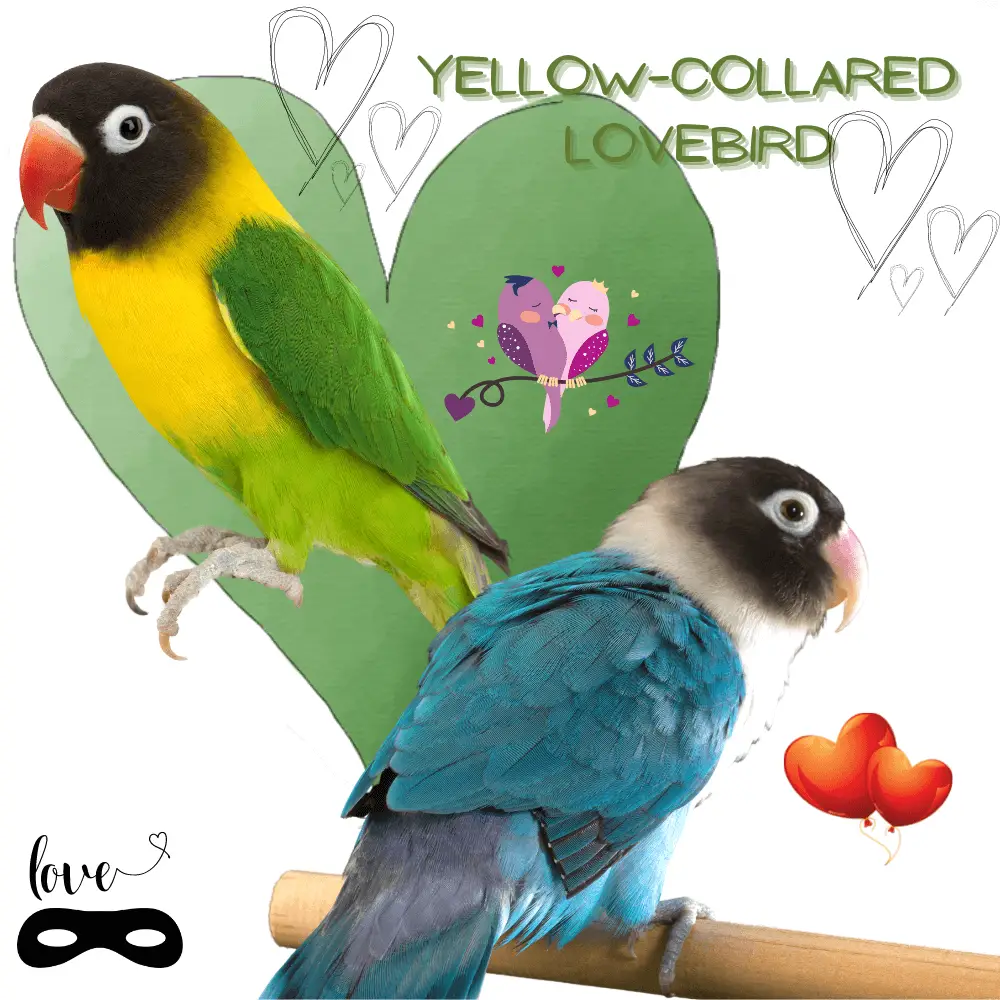Yellow-collared lovebird is perhaps one of the most beautiful lovebirds in the world and also one of the most adored in the world. Whoever has it in his house knows he has an inseparable companion.
- Size: Small
- Weight: 45-55 grams
- Length: 14.5-15cm
- Common name: Masked lovebird.
- Nom scientifique: agapornis disguised
- Food: cereals, seeds, and fruits
What is the origin of this bird?
Its name comes from the Greek words agape, which means love, and ornis, which means bird. That is why this bird is often called a lovebird. But in countries like Spain, this bird is commonly called the common lovebird. Others have named it a masked lovebird, black-masked lovebird, or eye ring lovebird.
It was discovered in Tanzania around 1887, where it lived in groups of around 30 lovebirds. Its habitat extends throughout the savannah, living on the trees of the region. Its beauty soon prompted bird care enthusiasts to start breeding it.
Yellow-collared lovebird personality
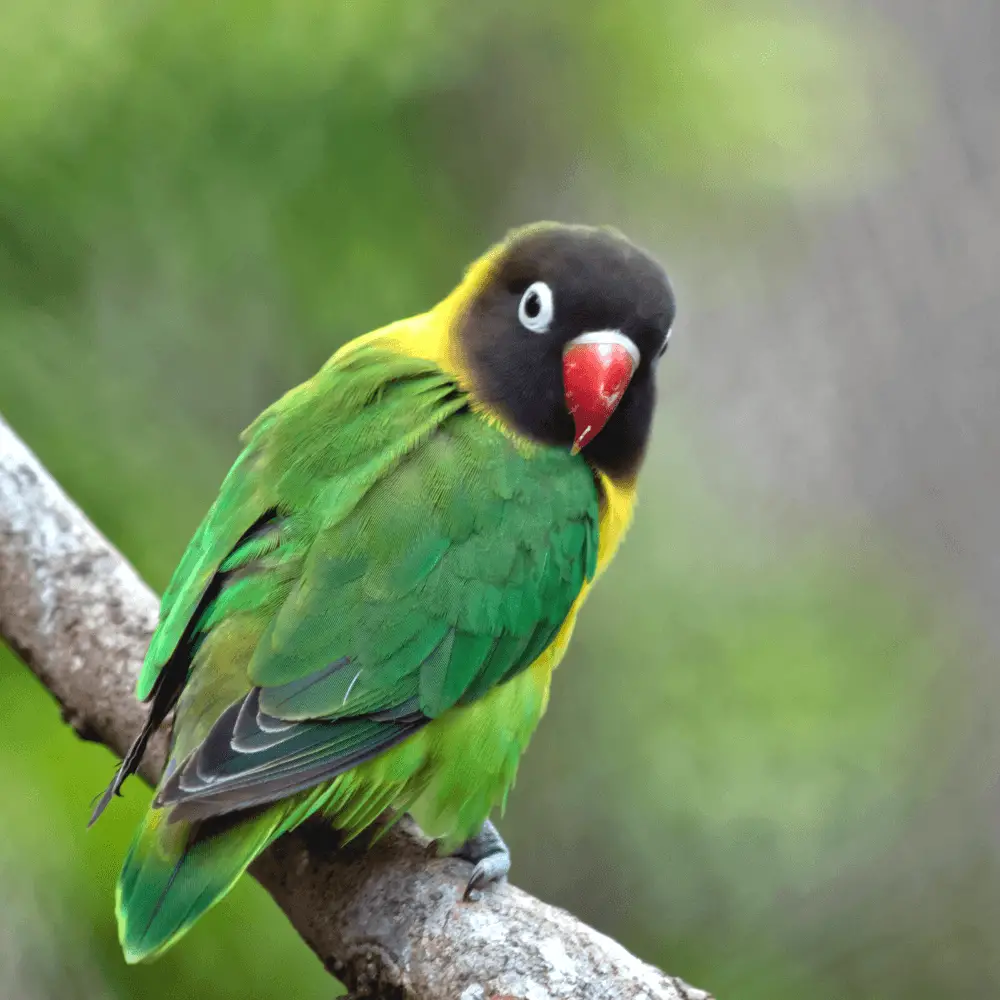
It is one of the smallest lovebirds that exists because its average size is 12.5 and 15 cm. Due to the different mutations, she received during the breeding period, there are many variants of bluish tones, a pale gray tone, or a purple tone.
The main characteristic of this bird is the blackish color, or an almost black-brown tone, in the head, with each of its eyes surrounded by a large white ring, making it appear to be wearing a mask. Its small beak is a bright red color which contrasts with the rest of the head.
In the case of his body, his neck and upper chest have a yellowish tone, although sometimes it is an orange tone. Its legs are firm and strong of a grayish color, with which you can easily rest on the bars of the cage or on the hangers. Their wings are also very strong and allow them to fly at high speeds.
As for its character, It is one of the most affectionate lovebirds if you have gained confidence with its owner, but with other birds, this can become a problem due to its territorial nature.
The Yellow-collared lovebird is a variety of agapornis, a psittacine bird native to East Africa, where it lives wild in Kenya and Tanzania. Their scientific name is “agapornis personatus”, they are small, with an average weight of 50 grams and a length of 14.5 to 15 cm.
The Yellow-collared lovebird or black head has a light green body, yellow chest, dark green wings, and a black or dark brown head. This is its main feature. The feathers on the edge of the wings are also black, as are the eyes, which are surrounded by a white circle.
Yellow-collared lovebird is a sociable animal, which has become popular as a pet because it is the most colorful lovebird, because of its fun nature, and because it is easy to breed in captivity.
One of their popular names is “inseparable birds” or love birds. Indeed, the lovebirds establish breeding pairs that remain together for years, often until one of the two dies.
It is common to see both mates raising their chicks together, feeding each other, and patting their heads with their beaks. They like to sleep together and chat all day long, gargling tirelessly. The relationship between male and female lovebirds is very close and long-lasting, making them very special birds.
Masked lovebird care
First of all, if you want this bird to have a cage mate, the female will be its mate. Unfortunately, his violent and territorial nature makes him terribly violent when close to another man. You must therefore be very careful who is in the cage with him. Especially in the breeding season will be when they become more violent.
Despite this small “temperament” it is a very loving and caring animal with your partner and also with its owners. This is the type of bird that can learn to do tricks, as it is quite playful and likes to do new things. Your food should always consist of high-quality seeds, although you can also receive pieces of fruit and vegetables without fear.
Getting him out of the cage to stretch his wings will never be a problem as long as you get used to what you will be eating once in the cage. He will explore the house and at first, there may be a knock, but don’t worry, as you will gradually get used to the room and be able to move it better.
A small detail to keep in mind is that males are more sociable than females, so with these, you will have to have a little more patience before letting them out of the cage.
In the event that we take good care of it, it is a fairly long-lived species, since some have reached 15 years of life, being one of the breeds of lovebirds that can live the longest in captivity.
SOURCE: African Grey Parrot Pet
Yellow-collared lovebird lifespan
The yellow-collared lovebird can live from 10 to 15 years in captivity if it is given the necessary care and a balanced diet.
The life expectancy of wild specimens living in the wild is lower, and they can live between 5 and 10 years. This is due to the fact that in the natural environment, they sometimes have to deal with food shortages, as well as predators and hunting by humans.
Masked lovebird behavior
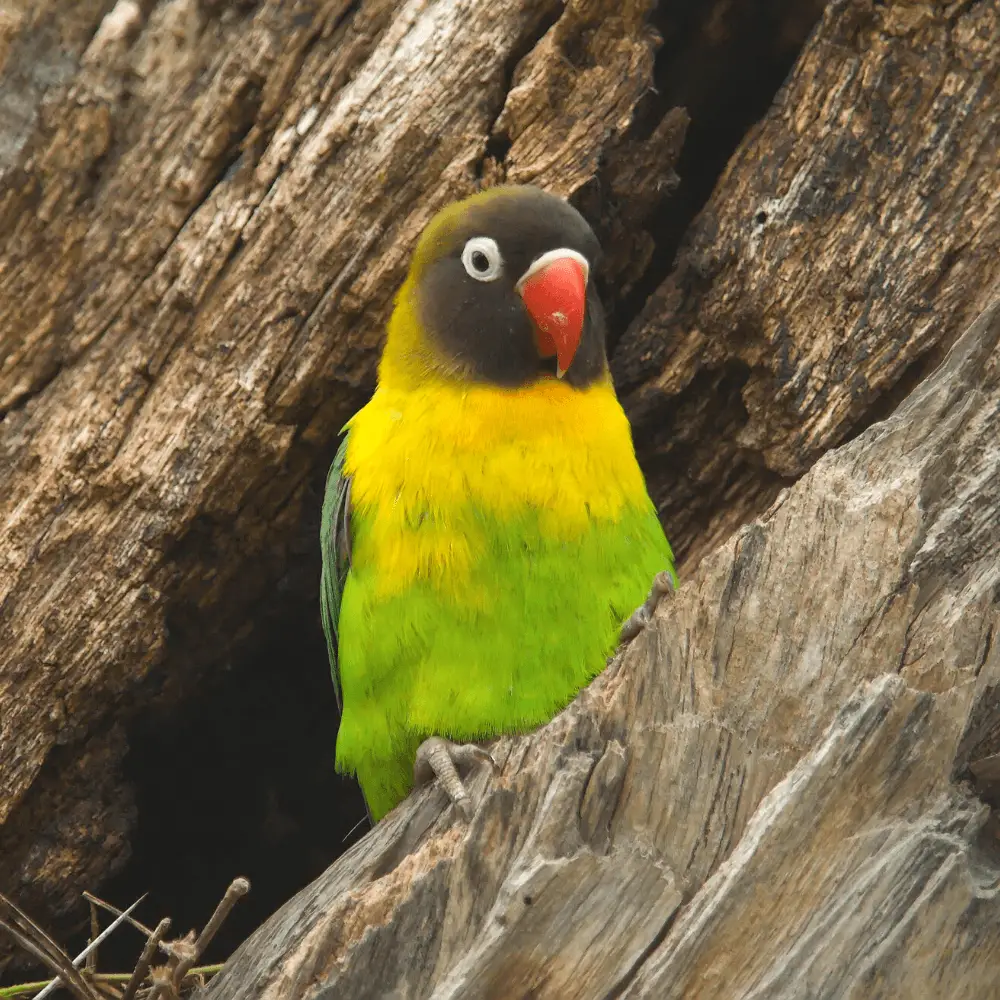
Yellow-collared lovebirds are sociable, funny, and very curious. They like to investigate their cage and even more if they have a chance of getting out of it. Most of them appreciate their new toys, as well as the little swings and special branches for them to climb and have fun.
If bred as butterflies, they are very affectionate birds and attached to their owner. They like to perch on your shoulder or your finger, accompany you while watching television or a video on your computer, and receive gentle caresses on the neck of their favorite human. Yellow-collared lovebirds are the most sociable and friendly to humans, having just been reared by hand, feeding them pap with a syringe from the age of 3 weeks. Because of this, they learn to trust people and are not afraid of them.
The papilleros can even be trained and, with patience, they manage to learn a few words.
If acquired from the wild (raised in a cage by their parents), they are difficult to tame, but it is interesting to watch them interact with each other in their cage. These birds are always doing things, inventing activities to entertain themselves, and communicating with gurgling or preening.
If you acquired a wild personatus lovebird, it means that this bird was born in captivity but was raised only by its parents. These chicks are often suspicious of people and dislike being touched as they are difficult to housebreak.
But you can always have a couple of wild characters and watch them interact in their cage, where they’re sure to give you a good time as they’re always communicating with each other, grooming each other and inventing activities to enjoy.
Yellow-collared lovebird price
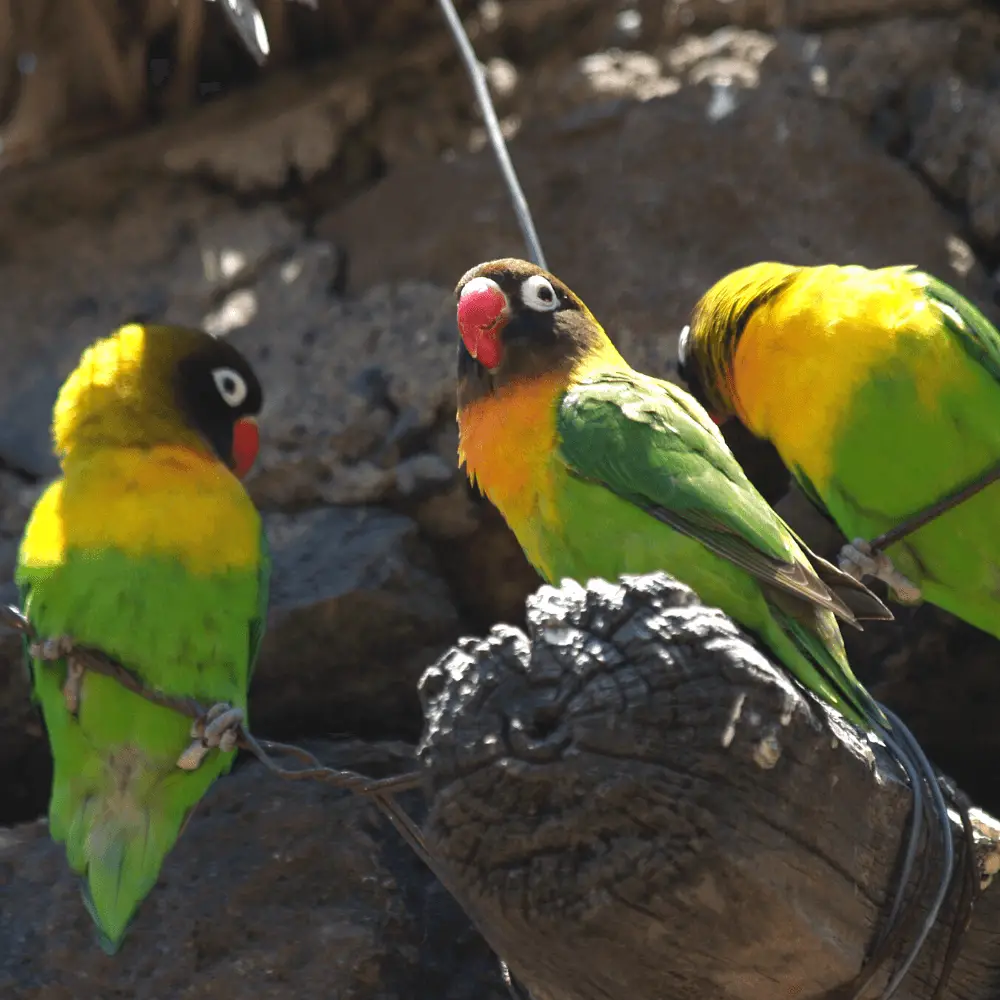
The price of a Yellow-collared lovebird is 25 to 60$.
The price differences depend on the color mutation you have chosen, whether the bird is banded and officially registered, whether it has been dewormed or whether it has been sexed using the DNA of its feathers in a specialized laboratory.
In this case, you will receive your personatus with a DNA sexing certificate which will guarantee you 100% if it is male or female. This test is very useful to avoid surprises with the sex of our agapornis because sexing “by eye” often leads to dollars.
Lovebirds favorite food
The Yellow-collared lovebird feeds mainly on cereals, seeds, vegetables, fruits, and some herbs. In captivity, we have the responsibility to provide them with adequate food, because if we only give them a mixture of seeds, we will give them insufficient food, which in the long term can cause them serious illnesses.
If you want to learn how to properly feed your Yellow-collared lovebird, learn what lovebirds eat and what trick you need to do to get them to finish the portion that’s healthiest for them (and not just eat what they like best, leaving the stay aside).
Lovebird Mutations
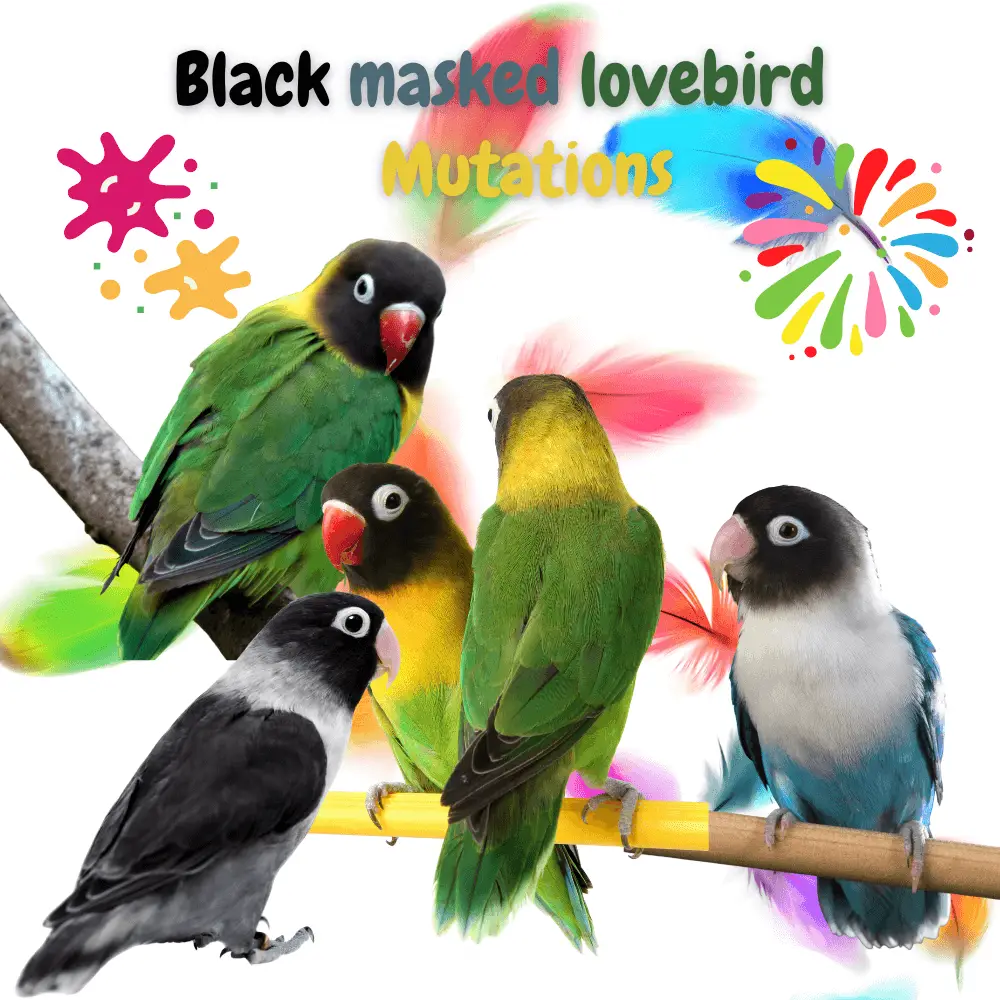
How many types of Yellow-collared lovebirds are there? Through captive breeding, many color mutations have been achieved in recent years, in addition to the original color called “ancestral green”. Mutations are color variations obtained by altering or reducing certain color-regulating pigments found in feathers, such as psittacine.
These are the most popular varieties of Yellow-collared lovebirds or blackheads:
- Green Personatus Lovebird
- personified by Bleu de Cobalt
- personified Jade Dilué
- personified by Celeste
- disguised as an albino or blanc
- personified by opal
- personified Lutinus
- personified Vert olive
- disguised as Misty
- personified by Violet
Green masked lovebird
The original color of the Agapornis personatus is green. These birds have emerald green bodies, yellow breasts and necks, and dark green wings. The most characteristic feature of these birds is the black mask that covers their face and forehead, earning them the nickname of black-headed lovers.
This lovebird has a red beak and a clearly marked white circle around its eyes. This is the variety of personatus that can be found in nature.
Cobalt blue lovebird
The Cobalt blue lovebird is a mutation in which the yellow color has all but disappeared from the feathers, making the bird’s body light blue, its wings dark blue, and its chest whitish. The black mask on the face and the white circle around the eyes is maintained, but the beak is not red as in the ancestral variety, but light pink. It is a very beautiful mutation, very appreciated by lovers of personatus.
Agapornis disguised as a jade dilué
The dilute jade agapornis personatus resembles the ancestral pattern, but the green color of its wings has a beautiful marbling in yellow, and the black mask of the face is in this variety of dilute black.
Lovebird disguised as bleu ciel
The sky blue agapornis personatus is a dilute version of cobalt blue. The body is light blue, the wings are sky blue, and the mask is smoke gray. The beak can be pink or ivory. It is a very beautiful and rare variety.
Lovebird albino or white personatus
The body of the white agapornis personatus is completely covered in this color, including the chest, wings, and even the face mask. Its eyes are red and its paws are pink.
This mutation is the result of the complete elimination of psittacine, which is responsible for plumage coloration. This process is known as “purification”. Although very colorful and quirky, white lovebirds are generally weaker and sicker than varieties of any other color and have a greater propensity to fall ill and even die before their ancestral green or blue counterparts.
Agapornis disguised as an opal
At the end of the 1990s, a new mutation appeared which affects the pattern of agapornis personatus, known as the “opal”. The opaline is an extension of the black mask which normally covers the face and forehead of the personatus and in this variety the entire head and neck of the bird are black.
Related article:

